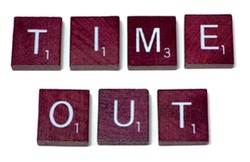 In B.F. Skinner’s phenomenal book The Technology of Teaching, he briefly discusses problems with punishment. He explains that the use of punishment (defined as adding or subtracting something from the environment in order to reduce the occurrence of a behavior), is not as clear-cut as we might imagine. When we attempt to punish a behavior, it’s quite likely that we will unintentionally suppress a broader range of behaviors than we intended.
In B.F. Skinner’s phenomenal book The Technology of Teaching, he briefly discusses problems with punishment. He explains that the use of punishment (defined as adding or subtracting something from the environment in order to reduce the occurrence of a behavior), is not as clear-cut as we might imagine. When we attempt to punish a behavior, it’s quite likely that we will unintentionally suppress a broader range of behaviors than we intended.
Skinner gives the example of a child who has touched a candle flame and been burned. The child has probably been taught not to touch the flame, but Skinner argues that it’s quite possible that “in the presence of a candle flame he will not be likely to explore any part of the environment, to reach for or grasp objects of any kind” (Skinner, 1968, p. 186). This is an important consideration, especially when we consider the classroom. We have to ask ourselves, when we punish certain behaviors, are we unintentionally suppressing other, desirable behaviors? And in punishing the undesirable behavior, are we clearly communicating to the child what the desirable behavior is?
Skinner then moves on to discuss alternatives to punishment. What he describes is known today as differential reinforcement. Since Skinner wrote The Technology of Teaching, a great deal of research has been completed on differential reinforcement, which “consists of reinforcing particular behavior(s) of a given class (or form, pattern or topography) while placing those same behaviors on extinction and/or punishing them when they fail to match performance standards or when they occur under inappropriate stimulus conditions” (Mayer, Sulzer-Azaroff, & Wallace, 2014). Put simply, we reinforce the desired behavior and do not reinforce the undesired behavior.
Today we have categories for many different types of differential reinforcement to better describe strategies for implementation.
Types of differential reinforcement include:
- Differential Reinforcement of Alternative Behavior (DRA)
- Differential Reinforcement of Other Behavior (DRO)
- Differential Reinforcement of Incompatible Behavior (DRI)
- Differential Reinforcement of High Rates of Behavior (DRH)
- Differential Reinforcement of Low Rates of Behavior (DRL)
Differential reinforcement is an incredibly useful tool for teachers and parents. So we will devote several Tips of the Week over the upcoming months to how to use it effectively, taking a closer look at each of the types listed above.
References
Mayer, G. Roy, Sulzer-Azaroff-B. & Wallace, M. (2013). Behavior analysis for lasting change (3rd ed.). Cornwall-on-Hudson, NY: Sloan Publishing.
Skinner, B. F. (1968). The technology of teaching. New York: Appleton-Century-Crofts.
WRITTEN BY SAM BLANCO, MSED, BCBA
Sam is an ABA provider for students ages 3-12 in NYC. Working in education for ten years with students with Autism Spectrum Disorders and other developmental delays, Sam has developed strategies for achieving a multitude of academic, behavior, and social goals. Sam is currently pursuing her PhD in Applied Behavior Analysis at Endicott College.








 Who works here? Why might they be laughing? When do you eat at the table? Use this set of 36 Wh- Question ColorCards and unlock opportunities to discover, understand, and practice Wh-questions. This week only, take 15%* off your set of the
Who works here? Why might they be laughing? When do you eat at the table? Use this set of 36 Wh- Question ColorCards and unlock opportunities to discover, understand, and practice Wh-questions. This week only, take 15%* off your set of the  The ColorCards feature vivid photos of scenarios that allow for multiple opportunities to develop this key skill. These cards can be used in group or one-to-one settings, and come with a booklet with sample Wh- questions to ask for each of the images depicted.
The ColorCards feature vivid photos of scenarios that allow for multiple opportunities to develop this key skill. These cards can be used in group or one-to-one settings, and come with a booklet with sample Wh- questions to ask for each of the images depicted. The time-out ribbon may be an excellent solution for just those types of instances. When Foxx and Shapiro (1978) first wrote about the time-out ribbon, they referred to it as “nonexclusionary time-out,” meaning the individual does not have to be excluded from an environment or activity to be “in time-out.” In their initial study, all students wore a ribbon on their wrist. When the individual has the time-out ribbon on, they have access to socially-mediated reinforcement. If the time-out ribbon is removed, they do not have access to that reinforcement. (Foxx & Shapiro also note that it does not have to be a ribbon, but could be anything that is easy to wear and easy to remove.) However, by again demonstrating appropriate behavior, the ribbon can be placed again on the individual’s wrist.
The time-out ribbon may be an excellent solution for just those types of instances. When Foxx and Shapiro (1978) first wrote about the time-out ribbon, they referred to it as “nonexclusionary time-out,” meaning the individual does not have to be excluded from an environment or activity to be “in time-out.” In their initial study, all students wore a ribbon on their wrist. When the individual has the time-out ribbon on, they have access to socially-mediated reinforcement. If the time-out ribbon is removed, they do not have access to that reinforcement. (Foxx & Shapiro also note that it does not have to be a ribbon, but could be anything that is easy to wear and easy to remove.) However, by again demonstrating appropriate behavior, the ribbon can be placed again on the individual’s wrist.
